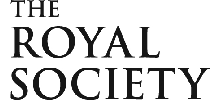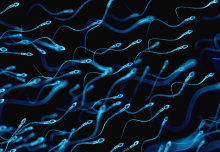
Sharing the wonder at the exhibition

Four Imperial teams were part of the 23rd annual exhibition in July, where the UK's most exciting new science and technology took centre stage.
Visitors to Imperial’s four exhibits were challenged with racing cells using lasers, playing video games with sensor-based headsets, spotting the next Higgs boson of particle physics, and making themselves heard by robotic ears in a noisy environment.
For the research teams behind the stands, the experience was equally rewarding.
"Taking part in the exhibition was fantastic, there are so many enthusiastic people," says Michael Barclay, a member of Professor David Klug’s team from the Department of Chemistry, who showcased new techniques to study single cells.
With over 100 new people following our project on Twitter alone, we are building a large a very diverse community of supporters for our work
Michael Barclay
Department of Chemistry
"We were visited by MPs, Fellows of the Royal Society, Knights and Dames, thousands of school children, a Persian TV channel and even a composer, who was very interested in the artistic aspect of the beautiful patterns created by our acoustic Chladni plates. With over 100 new people following our project on Twitter alone, we are building a large a very diverse community of supporters for our work."
Professor Arttu Rajantie from the Department of Physics ran the Monopole Quest stand where his team trialled a new citizen science project that will run alongside the recently launched MoEDAL experiment at CERN to find magnetic monopoles. It will give the public the opportunity to be involved in the search for these elusive, hypothetical particles that have just one pole; North or South.
"You get a different point of view from listening to how people outside physics see your research. It’s important for us to not just share our results with the public but get them engaged with the research and its future direction. This is why part of MoEDAL is a citizen science project, and why we were so pleased that, with the support of the Royal Society and CERN, we saw over 1000 members of the public take part in a trial of the platform during the Exhibition."
Public engagement
As well direct collaboration, public engagement can also provide an opportunity to pick the brains of potential end users of research.
Dr Patrick Naylor’s team from the Department of Electrical and Electronic Engineering are attempting to improve audio processing technology to help machines to hear better, research that was covered by a number of media outlets during the exhibition, including Engineering and Technology Magazine and Tech Times.
It has certainly served to reinforce our understanding of the importance and the value of the various different objectives of the research
– Dr Patrick Naylor
Department of Electrical and Electronic Engineering
However they were particularly pleased to have the opportunity to carry out some informal, early stage market research.
"One application of our technology is to improve the performance of hearing aids, so engaging with those people at the exhibition who use hearing aids has been of enormous interest," says Dr Naylor.
"It has certainly served to reinforce our understanding of the importance and the value of the various different objectives of the research."
The final group came from the Hamlyn Centre, where Professor Guang Zhong-Yang and his colleagues unveiled new apps and wearable sensors to transform gaming, healthcare and wellbeing. They used the exhibition to run their own form of market research around sensor placement.
"Where you decide to fit a sensor on a person is a critical to its design and the user experience, so to get to survey over 1,700 people on their preferences is valuable insight," said Dr Benny Lo.
"Combine this with BBC coverage, interest in our technology from global corporations, surgeons and clinicians, and the opportunity to inspire the next generation of scientists and engineers, and you have a really rewarding experience."
You can find out more about how the four teams got on in the video recorded above during the exhibition, and by scrolling down to the Storify, compiled from the four team’s exhibition highlights at the foot of this page.
If you would like to take part in next year’s Summer Science Exhibition the call for proposals is now open here. If you would like any advice or help with your submission, please contact the events team at events@imperial.ac.uk.
Supporters

Article text (excluding photos or graphics) © Imperial College London.
Photos and graphics subject to third party copyright used with permission or © Imperial College London.
Reporters
James Romero
Office of the Provost

Contact details
Tel: +44 (0)20 7594 8198
Email: j.romero@imperial.ac.uk
Show all stories by this author
Martin Sayers
Communications Division

Contact details
Tel: +44 (0)20 7594 8140
Email: m.sayers@imperial.ac.uk
Show all stories by this author
Mike Jones
Enterprise

Contact details
Tel: +44 (0)20 7594 3891
Email: michael.jones1@imperial.ac.uk
Show all stories by this author





Leave a comment
Your comment may be published, displaying your name as you provide it, unless you request otherwise. Your contact details will never be published.